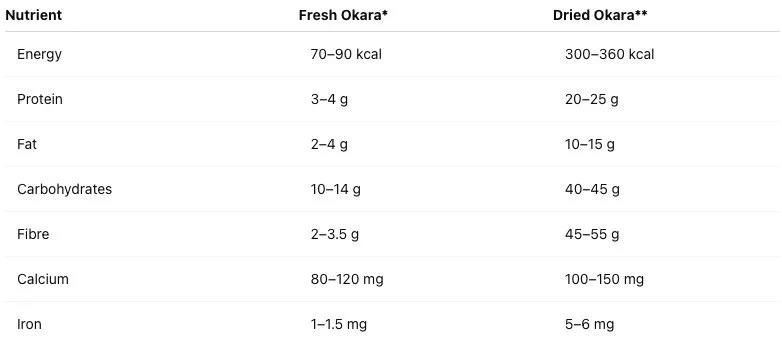Tofu’s Secret Twin – What to Do With Okara (Soy Pulp)
When you think of tofu or soy milk, you likely picture creamy cubes or a silky pour — but behind these soy staples lies a hidden treasure: okara.
Often discarded or overlooked, okara is the pulp left behind after soybeans are blended and strained during tofu or soy milk production. But call it waste no longer — this soft, mild-flavoured ingredient is packed with potential.
In kitchens across Japan (where it's used in unohana), Korea (biji-jjigae), and China (zha doufu), okara has long been a humble but beloved ingredient. Now, with the global spotlight on sustainability and plant-based eating, okara is finally getting the attention it deserves.
What Is Okara?
Okara is the fibrous pulp that remains after blending and straining soybeans. It has a crumbly, moist texture when fresh — somewhat like a cross between mashed chickpeas and damp breadcrumbs — and a neutral, slightly nutty flavour that soaks up seasonings beautifully.
There are two main types:
Fresh okara: Soft and perishable; must be cooked before eating.
Dried okara (or okara flour): Shelf-stable and much more concentrated in nutrients.
Nutrition Snapshot (per 100g)
*Values vary depending on moisture, soybean variety, and processing method.
**Dried okara has significantly higher nutrient density due to low water content.
Why Okara Deserves a Place in Your Kitchen
✅ Rich in Fibre and Plant Protein
Fresh okara provides moderate amounts of fibre and protein, while dried okara is a nutritional powerhouse. In fact, dried okara flour can contain over 45g of fibre per 100g, which is more than 10 times the fibre in many refined wheat flours, and still significantly higher than whole wheat flour.
✅ Packed with Beneficial Compounds
Okara contains soy isoflavones, saponins, and polyphenols — compounds linked to reduced inflammation, improved cholesterol, blood sugar balance, and even gut-brain axis support in early research. While some of these benefits are more pronounced when okara is fermented, even unfermented forms contribute positively to a plant-based diet.
✅ Gut Health Support
Its high fibre content, especially insoluble fibre, helps support digestive health and regularity.
✅ Supports Zero-Waste and Sustainability
Globally, tofu and soy milk production generates millions of tonnes of okara annually — much of which is wasted. Cooking with okara helps reduce this waste while nourishing your body and lowering your food footprint.
But First, a Note on Food Safety
Fresh okara spoils rapidly, especially at room temperature due to its high moisture and nutrient content.
Refrigerate immediately: Use within 2–3 days.
Freeze if storing longer: Keeps well up to 6 months.
Cook before eating: Raw okara contains trypsin inhibitors, which interfere with protein digestion. Cooking deactivates them.
Some sources also highlight trace phytates, another group of anti-nutrients. While cooking reduces some, soaking or fermenting is significantly more effective at minimising phytate content and improving nutrient absorption.
How to Use Okara: From Waste to Wonder
Okara’s soft texture and mild taste make it incredibly versatile:
🥟 Add to veggie patties, dumpling fillings, or meatballs for moisture and bulk.
🍞 Bake into muffins, quick breads, or pancakes (replace up to ¼ of the flour).
🍛 Simmer into soups and stews to thicken and enrich.
🥣 Stir into oatmeal or porridge for a fibre boost.
It blends well with garlic, miso, spices, sesame, or curry pastes — so don’t be afraid to get creative.
Sourcing Okara
Homemade soy milk or tofu: Strain the blended soybeans and save the pulp.
Local tofu makers: Ask if they’re willing to share fresh okara — some give it away!
Dried okara flour: Available online or in some Asian grocers.
Final Thoughts: From Forgotten Byproduct to Future Staple
Okara is more than just tofu’s twin — it’s a symbol of resourceful, sustainable eating. With deep roots in East Asian cooking and exciting potential for modern plant-based kitchens, okara invites us to rethink waste, honour the whole bean, and turn humble leftovers into nourishing meals.
It’s time this unsung hero had its moment.


